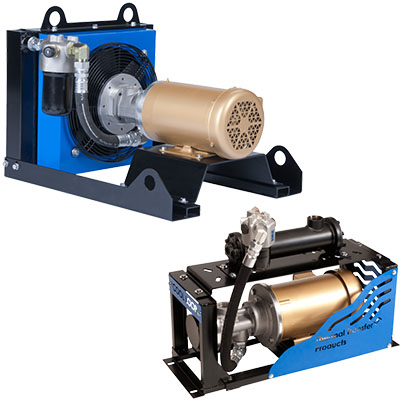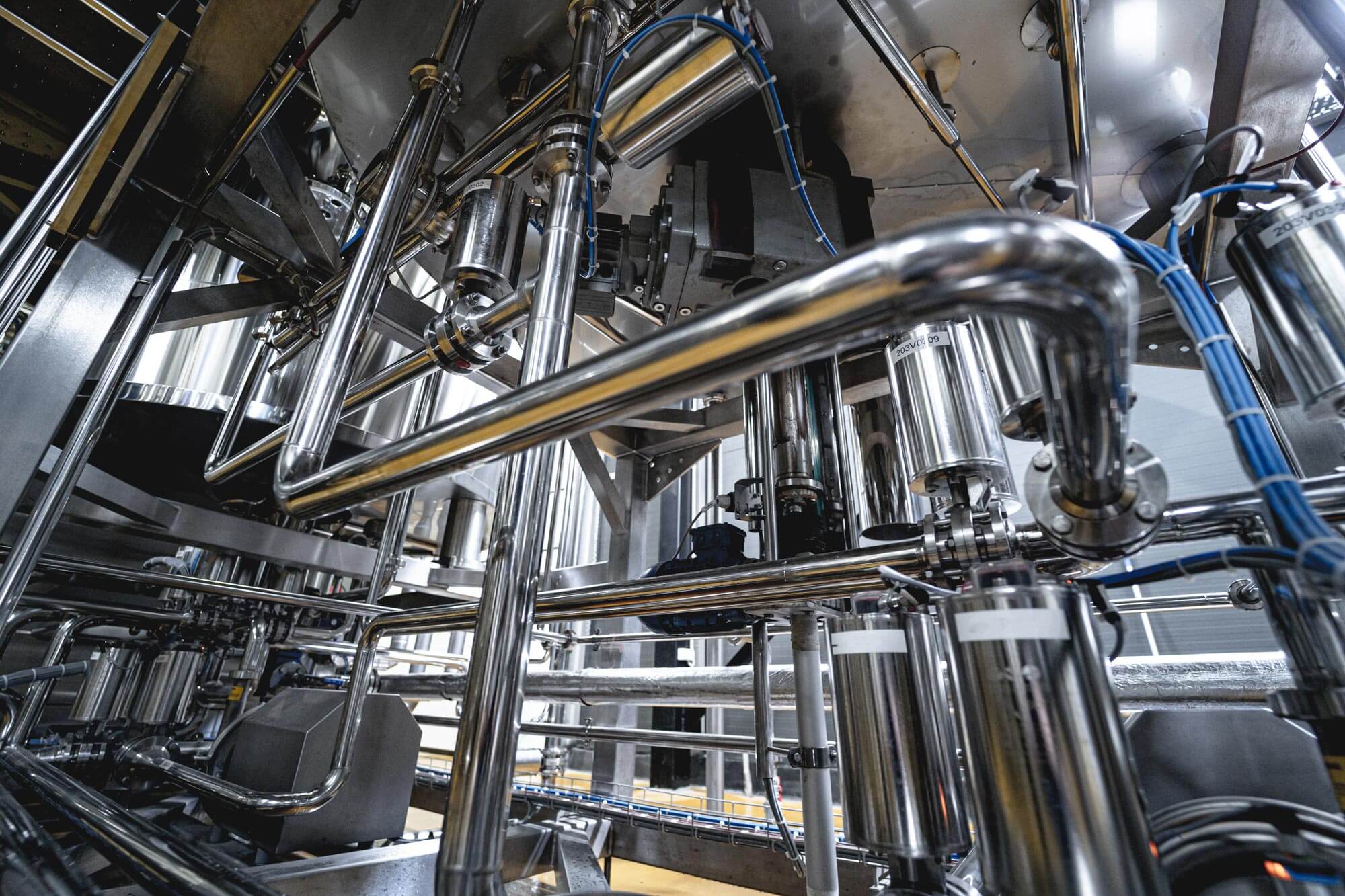A Comprehensive Overview to Selecting the Right Heat Transfer Solutions for Your Needs
Choosing the appropriate Heat transfer system is essential for functional efficiency. Various systems satisfy different demands, influenced by aspects such as temperature level variety and liquid type. Understanding the concepts behind Heat transfer, such as transmission, radiation, and convection, is critical. In addition, reviewing power resources and upkeep practices can influence long-term performance. A closer evaluation of these factors to consider exposes just how to customize a system to details needs. What should one prioritize in this facility decision-making procedure?
Comprehending Heat Transfer: Trick Concepts and Concepts
Although Heat transfer may look like an uncomplicated idea, it includes a series of concepts that are essential for reliable system design. Recognizing these principles is important for designers and developers that intend to enhance thermal performance in numerous applications. Conduction, as an example, involves the transfer of Heat via solid materials, while convection describes the motion of Heat within liquids. Radiation, an additional key principle, describes exactly how Heat can be transferred with electro-magnetic waves. Each of these systems plays a vital duty in determining exactly how power relocates within a system. By completely grasping these concepts, experts can make educated choices, guaranteeing that Heat transfer systems run successfully and fulfill the specific demands of their applications
Kinds Of Heat Transfer Systems: An Overview
Recognizing the principles of Heat transfer prepares for discovering the numerous types of Heat transfer systems available. Heat transfer systems can be classified largely right into three kinds: transmission, radiation, and convection. Conduction involves Heat transfer through solid materials, counting on straight contact in between particles. Convection, on the other hand, takes place in fluids (fluids and gases) where the motion of the fluid itself helps with Heat transfer. Radiation includes the transfer of Heat via electro-magnetic waves and does not call for a tool, enabling it to happen in a vacuum cleaner. Each kind of system has distinctive qualities and applications, making it important for people and organizations to meticulously analyze their certain requirements when selecting the most ideal Heat transfer solution.
Applications of Heat Transfer Systems in Different Industries
Heat transfer systems play a necessary function throughout numerous industries, influencing performance and item quality. In commercial production procedures, they promote exact temperature control, while in food and drink processing, they assure safety and preservation. Furthermore, a/c and climate control systems rely heavily on effective Heat transfer to preserve comfortable settings.
Industrial Production Processes

Numerous industrial production processes depend heavily on reliable Heat transfer systems to take full advantage of productivity and boost product high quality. In sectors such as metalworking, Heat exchangers play a crucial function in keeping ideal temperatures during welding, casting, and creating. These systems assure uniform Heat distribution, which is vital for attaining desired material properties. Likewise, in the chemical production market, Heat transfer systems help with specific temperature control during responses, impacting return and safety. In textile production, efficient Heat monitoring is important for dyeing and ending up processes, influencing color uniformity and textile quality. By selecting proper Heat transfer innovations, makers can improve power efficiency and minimize operational expenses, ultimately leading to an extra lasting and competitive manufacturing setting.
Food and Drink Processing
Efficient Heat transfer systems are equally vital in the food and drink handling market, where maintaining suitable temperature levels is vital for food security and high quality. These systems play a necessary duty in procedures such as sanitation, pasteurization, and cooking, ensuring that products are risk-free for intake and maintain their dietary value. Heat exchangers, for example, efficiently move Heat between fluids, enhancing energy use while lessening temperature changes. Furthermore, refrigeration systems are essential for expanding and protecting perishable products life span. The choice of Heat transfer innovation straight affects operational performance and item honesty, making it critical for food and drink producers to select the proper systems tailored to their details handling needs. This mindful option ultimately adds to customer satisfaction and food safety.

Cooling And Heating and Environment Control
While several markets count on Heat transfer systems for effectiveness, HEATING AND COOLING (Home Heating, Air Flow, and A/c) plays a crucial role in preserving indoor climate control throughout different settings. These systems utilize Heat transfer principles to regulate moisture, temperature level, and air top quality, making sure convenience and safety in domestic, business, and commercial settings. Appropriately made heating and cooling systems boost power efficiency, decrease functional costs, and lessen environmental influence. In business structures, for example, effective climate control adds Visit This Link to staff member performance and consumer fulfillment. In industrial applications, HVAC systems assist keep optimal problems for equipment operation and product preservation. Selecting the ideal Heat transfer system is vital for meeting specific climate control needs and attaining general system efficiency.
Reviewing Power Resources for Heat Transfer Equipments
In reviewing power sources for Heat transfer systems, a contrast of eco-friendly power options and nonrenewable fuel source considerations is necessary. Eco-friendly resources, such as solar and wind, deal lasting choices that can lower environmental effect. Alternatively, fossil gas remain prevalent as a result of their well established framework and energy thickness, prompting a careful assessment of both choices.
Renewable Resource Options

Nonrenewable Fuel Source Considerations
Reviewing nonrenewable fuel source considerations is important for the efficiency and sustainability of Heat transfer systems. Fossil gas, such as all-natural gas, oil, and coal, are traditional energy resources that supply substantial Heat outcome, making them popular options for domestic and commercial applications. Nonetheless, their environmental effect, including greenhouse gas discharges and resource depletion, elevates worries. When selecting a warm transfer system, it is vital to assess the schedule, cost, and regulative elements connected with these fuels. In addition, the performance of nonrenewable fuel source systems have to be taken into consideration, as greater efficiency can minimize some environmental downsides. Inevitably, a balanced method evaluating performance and sustainability can guide decision-makers toward the most ideal Heat transfer option for their specific needs.
Elements to Take Into Consideration When Selecting a Warmth Transfer System
Selecting an ideal Heat transfer system requires mindful factor to consider of various factors that can significantly influence effectiveness and performance. One crucial variable is the operating temperature level range, which determines the materials and layout suitable for the application. Additionally, the kind of liquid utilized in the system-- whether gas or fluid-- influences Heat transfer efficiency and compatibility. The system's dimension and ability must straighten with the details demands of the procedure to avoid inadequacies. Power resource accessibility is additionally important, influencing operating costs and sustainability. Moreover, the installment setting, consisting of area restraints and ease of access for upkeep, plays a considerable role in system option. Finally, governing conformity and security standards must be considered to assure the system fulfills all legal requirements.
Upkeep and Effectiveness Optimization for Heat Transfer Solutions
Preserving Heat transfer systems is necessary for guaranteeing optimal performance and durability. Routine upkeep activities, such as cleaning up Heat exchangers and inspecting insulation, aid protect against effectiveness losses because of fouling and thermal connecting. Additionally, checking system parameters, including stress and temperature level, permits very early detection of anomalies, lessening downtime and expensive repair work. Applying a preventive maintenance routine can optimize performance and prolong the life expectancy of elements. Upgrading to sophisticated control systems can improve functional efficiency by changing to differing lots and problems. By prioritizing maintenance and performance optimization, check that drivers can attain minimized power intake, reduced functional expenses, and boosted total system integrity, eventually causing far better source application and an extra sustainable operation.
Future Patterns in Heat Transfer Technologies
As markets progressively prioritize sustainability and energy performance, future trends in Heat transfer modern technologies are readied to undergo considerable makeovers. Developments such as sophisticated materials, including carbon nanotubes and nanofluids, promise enhanced thermal conductivity and performance. In addition, the combination of eco-friendly power sources into Heat transfer systems is getting energy, promoting environment-friendly options. Smart innovations, consisting of IoT sensors, are expected to revolutionize surveillance and control, enabling real-time data analysis for enhanced performance. The advancement of modular and compact systems will certainly assist in easier installment and upkeep, providing to diverse applications. These advancements suggest a shift in the direction of more lasting, efficient, and adaptable Heat transfer solutions, aligning with worldwide power goals and ecological criteria.
Frequently Asked Questions
What Are the Environmental Influences of Heat Transfer Solutions?
The environmental impacts of Heat transfer systems can consist of greenhouse gas emissions, power usage, and potential thermal air pollution. Additionally, inappropriate disposal of materials and ineffectiveness can add to source depletion and ecological community disturbance.
Exactly how Do I Compute the Cost-Effectiveness of a Heat Transfer System?
To determine the cost-effectiveness of a heat transfer system, one need to examine first costs, operational costs, upkeep demands, and energy efficiency, contrasting these aspects against the expected life-span and performance of the system.
Can Heat Transfer Equipment Be Made Use Of in Residential Setups?
Heat transfer systems can indeed be used in household setups. They provide effective home useful content heating and cooling solutions, making homes a lot more comfy while possibly decreasing energy costs. Their adaptability enables various applications in residential environments.
What Safety Regulations Apply to Heat Transfer Systems?
Safety policies for Heat transfer systems normally include guidelines on installment, upkeep, and procedure. Compliance with neighborhood structure codes, producer specifications, and market standards is necessary to assure risk-free and effective system efficiency in different applications.
Just How Do Different Materials Affect Heat Transfer Effectiveness?

Transmission, for circumstances, entails the transfer of Heat via solid products, while convection refers to the motion of Heat within fluids. Recognizing the principles of Heat transfer lays the groundwork for exploring the numerous kinds of Heat transfer systems available. Heat exchangers, for circumstances, efficiently move Heat in between fluids, optimizing energy usage while minimizing temperature level changes. In assessing energy sources for Heat transfer systems, a contrast of eco-friendly power alternatives and fossil gas considerations is important. Steels, such as copper and aluminum, conduct Heat successfully, whereas insulators like rubber and glass slow down Heat flow.